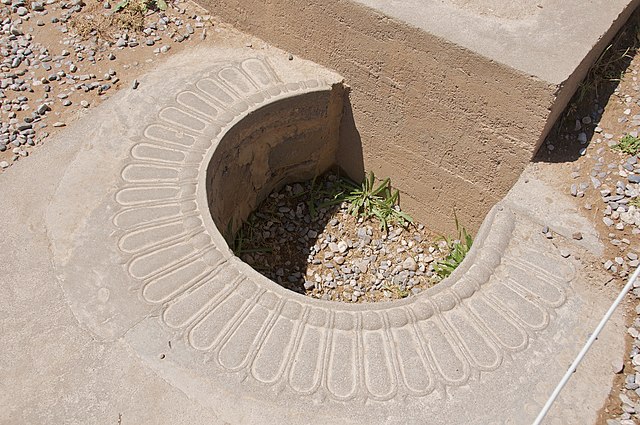A lintel or lintol is a type of beam that spans openings such as portals, doors, windows and fireplaces. It can be a decorative architectural element, or a combined ornamented/structural item. In the case of windows, the bottom span is referred to as a sill, but, unlike a lintel, does not serve to bear a load to ensure the integrity of the wall.
Modern-day lintels may be made using prestressed concrete and are also referred to as beams in beam-and-block slabs or as ribs in rib-and-block slabs. These prestressed concrete lintels and blocks can serve as components that are packed together and propped to form a suspended-floor concrete slab.
Lintel above a door in Paris
Ornamental carved lintel over Mandapa entrance at Chennakesava Temple, in the Hoysala architecture tradition of southern India
Ornamental Chinese lintel at Zhan Yuan.
Structural lintel over entrance, Treasury of Atreus, Mycenae, Greece
A door is a hinged or otherwise movable barrier that allows ingress (entry) into and egress (exit) from an enclosure. The created opening in the wall is a doorway or portal. A door's essential and primary purpose is to provide security by controlling access to the doorway (portal). Conventionally, it is a panel that fits into the doorway of a building, room, or vehicle. Doors are generally made of a material suited to the door's task. They are commonly attached by hinges, but can move by other means, such as slides or counterbalancing.
Stone door in Hampi (India)
A massive door socket from Persepolis (modern-day Iran)
Roman folding doors at Pompeii, from the first century AD, similar with Neoclassical doors from the 19th century
Roman wall painting of an ornate door, in the Villa Boscoreale (Italy), from the first century AD








